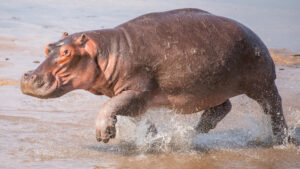Six months after one of most famous ships in history was found three kilometres below the Antarctic Ocean, the question remains: What to do with it?
British maritime archaeologist Mensun Bound discovered the Endurance, the abandoned ship of Ernest Shackleton, back in March. When asked whether the ship should be hauled out of the sea, Bound said he wasn’t sure — but it wouldn’t be there forever.
“Bringing it up – we’ve got to think about conserving it and the process of that, which museum is going to take that, which could take forever and a day,” Bound said, according to The Guardian. “But if we leave it there, it’s organic, it’s going to decay some time beyond our lifetime.”

The ‘Endurance’ lies at the bottom of the Antarctic Ocean. Photo: Falklands Maritime Heritage Trust
A ‘hot potato’
He called the prospect of moving the Endurance from its watery 1915 grave a “hot potato”, likely requiring several legal and logistical hurdles. He also referenced “contrasting views”.
“We have to remember the Shackleton family, who very likely own the ship, they have fairly strong views of their own,” Bound said.
That’s no doubt a reference to Sir Ernest Shackleton’s granddaughter Alexandra Shackleton, who said she’d prefer the ship stay in the depths.
“I had no problem with people photographing, but a lot of problems with people rummaging,” Alexandra Shackleton told The Times. “There might be bits and pieces of equipment which are probably very valuable, but whatever there is will stay there.”

Ernest Shackleton. Photo: Frank Hurley
Part of the myth of Shackleton
Given the popularity of the story surrounding the Endurance and the myth of Shackleton, the debate over its future will continue.
Shackleton’s failed expedition to make the first land crossing of Antarctica remains one of the great survival stories from the Heroic Age of Polar Exploration. Though he set out to make history by crossing the White Continent, Shackleton and his crew became famous instead for simply living to tell the tale: all 28 of them, in fact.
When the pack ice crushed their ship, they abandoned it. Shackleton and crew survived for 10 months on the ice before escaping in lifeboats. While some of the crew waited on an island, Shackleton and a select group made a 1,200km voyage in an open boat across the most treacherous seas on earth. They then made a final exhausting climb across a mountainous island.
The Endurance remained lost at the bottom of the ocean for decades, until found this year by the Endurance22 expedition. The ship lay 3,000m down, about seven kilometres south of the position where it went under.
“We have made polar history with the discovery of Endurance, and successfully completed the world’s most challenging shipwreck search,” John Shears, the veteran geographer who led the expedition, said at the time.
An uncertain future
Historians suggest that the wreck could carry priceless relics from the expedition, including photographs. These artifacts would likely be perfectly preserved, protected by the depth and cold of the water.
In London, Bound could barely contain his excitement over the historical treasures that might be hiding in “Endurance.”
“She’s the ultimate sealed box mystery, it’s an Aladdin’s cave,” he said.
In just three more years, the Endurance will mark its 100th anniversary at the bottom of the ocean. While historians like Bound will certainly push to rescue it, Shackleton held to a fatalistic view of life in Antarctica.
Months after the ship became stuck, he and his crew began to hear the ice slowly crushing it, like the sound of murder, Frank Worsley wrote at the time. When Worsley told Shackleton they’d have to abandon ship, the skipper replied simply:
“What the ice gets, the ice keeps.”






